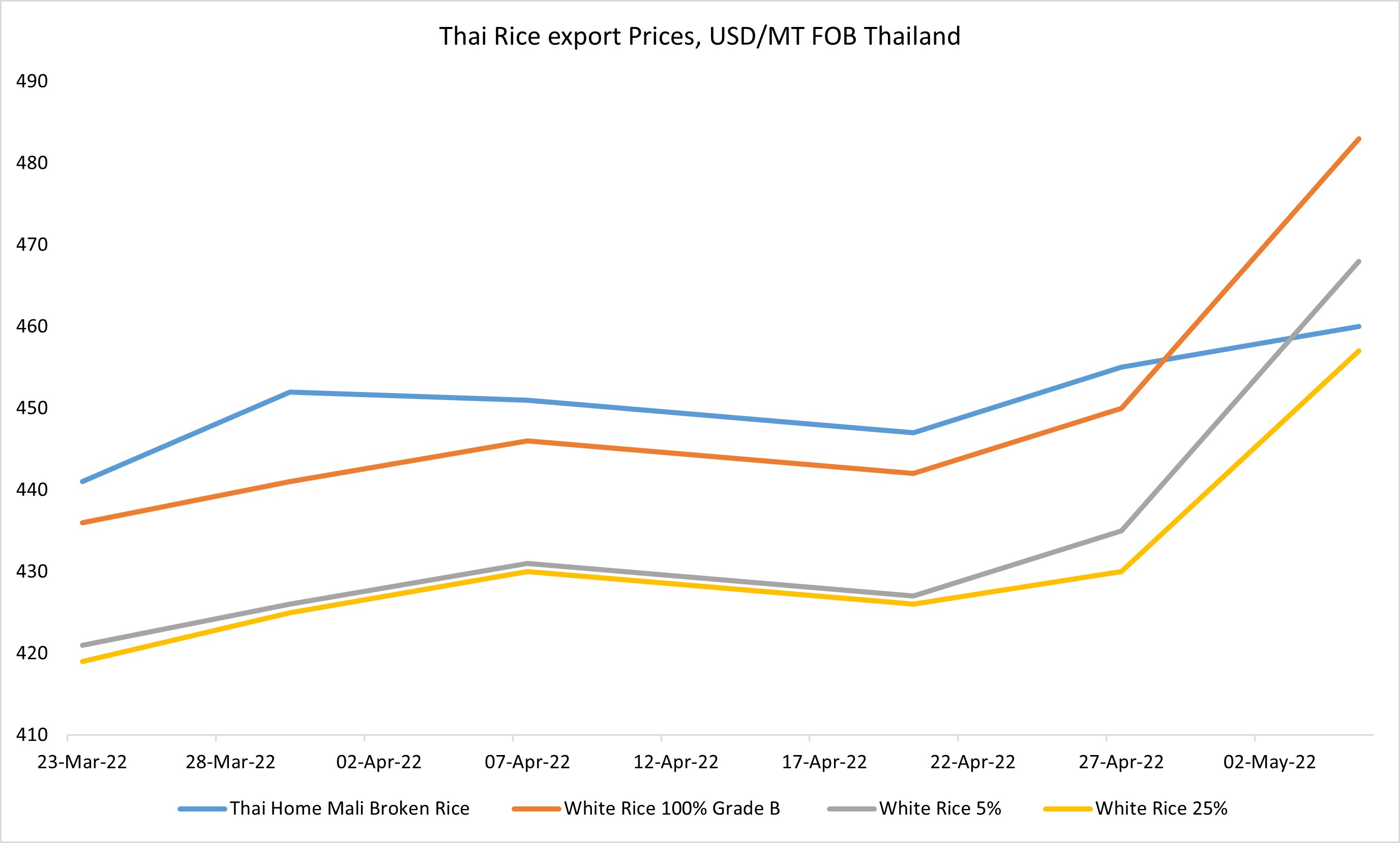Thai Export Rice Prices Climb Against Firm Demand

The 2022 season has begun on an optimistic note for the Thai export sector. In the past two months, robust international demand has driven export prices for Thai rice. The first price driver was the Russian-Ukrainian geopolitical tensions, which resulted in the fall in wheat and corn delivery from the Black Sea area. Many Asian importers started to look for grain alternatives in the international market, particularly rice. Surging global corn prices have made Asian and African buyers ramp up on buying broken rice to substitute corn in feed ratios partially.

Source: Thai Rice Experts Association
In W1 May 2022, Thai 5% broken white rice export offers stood at USD 465-470/MT FOB Thailand, a 7% jump compared to the previous week. The 25% broken white rice export prices rose to USD 455-460/MT, up 6% WoW. This increase is attributed to the resumption of trading activity from the Middle East buyers following Ramadan to replenish their depleted stocks. Some buyers are trying to close more deals by the end of Q2 2022 before the country enters the monsoon season and rice production decreases.
Although the official data regarding the current export levels is not finalized, the first two months' trade figures show a substantial rise in Thai rice shipments. In January-February 2022, Thailand's rice exports surged to 1.1 million mt, up 18% YoY. China remains the largest buyer, with purchases reaching 165,113 mt in January-February 2022, up 229% YoY. A rise in Chinese imports reflects higher broken rice purchases.
Iraq was the main driver of the Middle-East demand for Thai rice. The country imported 129,812 mt of rice from Thailand in the first two months of 2022, up from 146 mt a year earlier. In 2021, Iraq lifted the ban on Thai rice imports introduced in 2014 amid a low-quality rice consignment delivery.
Due to a few bullish factors, Thai rice export prices could increase by the end of Q2 2022 amid rising production costs and firm demand, buoyed by the economy reopening after COVID. Should the Black-Sea grain supplies remain constrained in the next few months, some importers will continue to look for expensive grain replacements and buy more rice instead. However, the price growth might not be as strong as wheat and corn, as ample local and global rice supplies will weigh on prices.